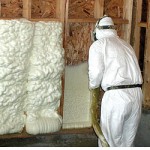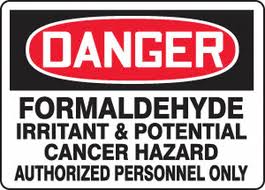Mon 22 Sep 2014
Diesel exhaust in construction
Posted by admin under ACGIH, Air Monitoring, Carcinogen, Diesel, Dust, Engineering Controls, Exposure, Formaldehyde, IAQ, MSHA, odor thresholds, PEL (Perm Exp Limit), Uncategorized, ventilation
Comments Off on Diesel exhaust in construction
This hazard is somewhat difficult to understand. There are number of reasons for the confusion, but the easiest way to explain it is to realize that:
Summary:
Diesel exhaust = Diesel particulate matter (DPM) = lots of different chemicals & particulates
AND: There is not a perfect way to measure the exact exposure.
The Long Story:
The term ‘diesel particulates‘ includes the following (not a comprehensive list):
- elemental carbon (the most reliable method for testing occupational exposure to exhaust, Birch & Cary 1996)
- organic carbon
- carbon monoxide (CO)
- carbon dioxide (CO2)
- hydrocarbons (PAH)
- formaldehyde
- oxides of sulfur & nitrogen
You can quickly see that these are very different substances, and to make it more confusing, you can change the amounts by:
- the fuel (on road/off, low emission fuel, biodiesel)
- the motor type
- the tuning of the motor (& dynamic versus idle), new motor restrictions
- scrubbers, etc.
In addition, there are not any well-established occupational exposure limits specifically for diesel exhaust. However, the International Agency for Research on Cancer has classified “whole diesel engine exhaust” as a carcinogen (cancer causing), so there is reason for concern. Most of the research and rules are in the mining industry, which uses a lot of diesel equipment and the exhaust really has no where to go.
- OSHA = none, but they have a hazard bulletin, and of course, some of the components have exposure limits
- MSHA = 0.4 mg/m3 for total hydrocarbons and 0.3 mg/m3 for elemental carbon
- Canada (CANMET) for respirable combustible dust (66% of respirable dust in mines is from diesel exhaust) = 1.5 mg/m3
- ACGIH = none (for now)
- 1995 proposed 0.15 mg/m3 (for diesel particulate matter)
- 1996 proposed lowering it to 0.05 mg/m3 (for diesel particulate matter)
- 2001 proposed a different limit of 0.02 mg/m3,
- but for elemental carbon and
- said it was a suspected carcinogen
- 2003 withdrew proposed limit- citing not enough scientific information
Bottom line:
- control the exhaust & where it goes (better fuel, better mechanical, scrubbers, ventilation).
- most exposures to diesel are below the (now retracted) ACGIH TLV of 0.02 mg/m3 (or 20 ug/m3) (Seshagiri & Burton, 2003).
- If you have a confined area, unusual concerns, or a particularly stinky situation; measure for multiple parameters (CO, CO2, elemental carbon and maybe NOx, and SOx). Compare these to their respective limits and classify the exposure (describe the conditions)







